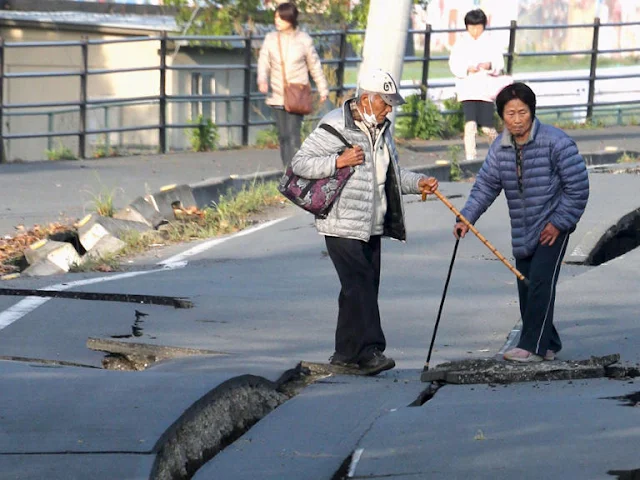Japan continues to grapple with the aftermath of a recent powerful earthquake that struck the Noto Peninsula. With its long history of natural disasters, Japan stands out as one of the most well-prepared countries for emergencies. A combination of factors, including a sophisticated alert system, stringent building codes, and a population that is educated and ready for such calamities, has contributed to Japan's ability to handle disasters effectively.
The recent earthquake, measuring 7.6 magnitude, hit the central region of the Noto Peninsula on January 1, causing significant damage. However, the death toll remains relatively low compared to similar earthquakes in other countries. For instance, earthquakes of similar magnitude in Turkey and Syria last year resulted in at least 56,000 deaths, while the 2010 earthquake in Haiti claimed up to 300,000 lives. Similarly, the 2005 earthquake in Pakistan led to at least 79,000 deaths. In contrast, as of the latest report, the death toll in Japan stands at 94 people.
Japan's preparedness can be traced back to the devastating 2011 earthquake, which was much larger in scale. Despite over 18,000 fatalities, Japan's history of preparedness helped many people evacuate, significantly reducing the loss of life. Currently, the situation on the Noto Peninsula remains challenging, with over 200 people missing and 30 villages cut off. The city of Wajima, heavily affected by the earthquake, is facing shortages of food and water for approximately 11,000 evacuees.
Japan's resilience in the face of earthquakes is due in part to its investment in infrastructure, strict building codes, and ongoing citizen training. The country, located on four tectonic plates, experiences around 1,500 earthquakes annually. As a result, Japan has continuously refined its earthquake preparedness over the years.
Following World War II, Japan enacted the Disaster Countermeasures Basic Act in 1961, which marked the beginning of increased investment and planning for earthquakes and floods. The country now boasts some of the world's strictest building codes, designed to withstand seismic activity. Japanese engineers have developed earthquake-resistant construction techniques, such as designing buildings to sway with the quake's motion and retrofitting older structures for better resilience.
However, surviving the earthquake itself is only part of the challenge. After the recent earthquake, many older wooden structures in Wajima succumbed to fires that broke out, highlighting the need for comprehensive disaster preparedness.
Japan's approach to disaster management is also reflected in its societal mindset. Disaster Prevention Day, observed annually on September 1 since 1960, underscores the importance of readiness. Regular drills are conducted to prepare citizens for emergencies, including earthquake response and basic first aid.
Additionally, Japan's Earthquake Early Warning System (EEWS), launched by the Japan Meteorological Society in 2007, provides crucial alerts to citizens, giving them a few seconds to minutes to seek safety before an earthquake strikes. This system has proven invaluable, particularly for rail travel, where trains automatically halt when an earthquake is detected.
Japan's investment in resilient infrastructure was evident during the 2011 disaster when rapid response teams swiftly repaired roads to facilitate the movement of supplies and assistance. The country has since implemented lessons learned from past disasters, improving its water supply infrastructure and fortifying backup systems for undersea cables that power the internet.
Despite these advancements, Japan faces ongoing challenges, such as the threat of another large earthquake or tsunami. The country continues to learn and adapt, demonstrating a commitment to enhancing its disaster preparedness.
In conclusion, Japan's approach to earthquake preparedness and disaster management serves as a model for other earthquake-prone regions. Through a combination of infrastructure investment, strict building codes, and comprehensive citizen training, Japan has significantly reduced the impact of earthquakes and tsunamis, highlighting the importance of proactive disaster management strategies.



